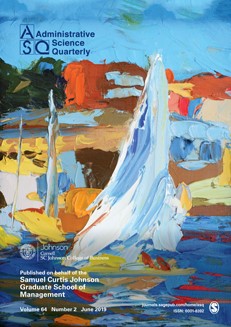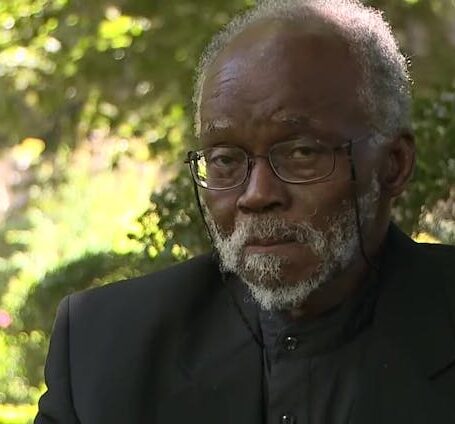
An assessment of the real-world impact of …
Whitened Résumés: Race and Self-Presentation in the Labor Market
by Sonia K. Kang, Katherine A. DeCelles, András Tilcsik, Sora Jun
This article illuminates the role of racial concealment and transparency in modern labor markets and points to an important interplay between the self-presentation of employers and the self-presentation of job seekers in shaping economic inequality.
Administrative Science Quarterly
Volume 61 Issue 3, September 2016
In June 2016 Administrative Science Quarterly (ASQ) published this article in OnlineFirst, and I posted a blog about it on www.organizationalmusings.com. I have been an editor long enough to spot what makes an article big, and I knew this one would have a major impact. I had no idea just how much. As I am writing this, three years on, it has appeared in 62 news outlets around the world and been featured in other blogs and more than 200 tweets. Outlets like BBC News, The Atlantic, The Guardian, Bloomberg, and Harvard Business Review have reported on the findings and what they mean for job applicants, firms, and society at large.
This article first reminds us of a key fact about racism in the twenty-first century: university graduates applying for jobs will be treated differently by employers depending on their race. This reality affects how employees can prove themselves not only in their first jobs but in all jobs that follow, because initial advantages are like investments: their effects accumulate over time. For the organizations doing the hiring, racial bias means that mistakes undermine the most important type of decision they make: who to select as members and contributors.
Those who are discriminated against have long known of one way to improve their chances of getting a job: they can “whiten” their résumés. This tactic is so well known that they may even be tutored in the practice by university career service employees. An applicant may change their name if it signals that they are African American or Asian and may remove work experience or names of volunteer activities that signal their race. I know people who have done this (indeed, SAGE’s Global Publishing President has written about his experiences). It is disturbing both to them and to their friends, not least because any kind of résumé tampering has ethical implications, and the idea that one can improve the odds of getting a job by removing mention of volunteer work is obviously wrong, even if it is an effective tactic.
But is it an effective tactic? This article provides a conclusive answer: yes, it works by giving an applicant a higher likelihood of a callback from the firm that receives the résumé. Not only that, but it does not matter whether the firm in question signals a specific commitment to diversity. Whitening the résumé is effective both for firms that signal that diversity is valuable and for firms that do not. So, firms that say they value diversity are not truthful. They like the idea of diversity in the abstract, but when faced with a concrete job applicant, they may decide otherwise.
And here is where the research indicates that there is a “diversity trap.” Students who see that a firm advertises its commitment to diversity typically take this as being true and do less whitening of a résumé sent to that firm. This means that company statements in job listings about the value of diversity are a trap for job seekers, who will not whiten their résumés and will suffer the very discrimination that the firm claims it is committed to eliminating.
Through a series of in-depth interviews on why, when, and how résumé whitening was done, the researchers also found out how students think about it. For students, whitening means breaking a barrier. They believe in meritocracy, and they value their own identity and experience, so whitening a résumé is as unpleasant as it sounds. But many students still do it because they know the risk of not getting callbacks. The techniques they use are largely truthful: a “white” hobby may be added, and the word “black” or any Asian markers may be removed from organization names. An Asian student may use a new, whitened name, and an African American student may pick the least black-sounding presentation of their name, perhaps by using their middle name.
Unfortunately, this paper is a practical guide to applying for jobs, and I am sure it is used that way. I suppose there is some fairness in that. When employers engage in discrimination, even if it is unplanned, deception is a good response. The findings point to a broad problem that we do not have solutions for yet. Discrimination is real, costly for people and organizations, and difficult to remove. Does this research give us any guidance on how to address this problem? No, and I would argue that it should not be asked to do so. Social scientists document what things are like in society and shine light on some of the reasons why, but societal problems call for broader societal solutions. For a problem as broad as discrimination, everyone needs to be conscious of the danger and to act against it.
As an organizational theorist, a particularly striking part of this research is that it shows how organizations can fall short of their own intentions. This is disturbing because nearly all we do is organizational in some way. We often call on organizations to solve societal problems, because organizations are a large and powerful part of society. But organizations are populated by people, and when it comes to discrimination, people’s thinking is an important part of the problem and the clearest path to a solution. Changing organizations is a start, but ultimately we need to change our minds.
Henrich R. Greve
Dr. Henrich R. Greve is a professor of entrepreneurship and the academic director of the Rudolf and Valeria Maag INSEAD Centre for Entrepreneurship.
View all posts by Henrich R. Greve





























































































